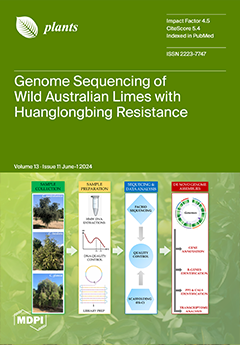Sufficient soil moisture is required to ensure the successful transplantation of sweet potato seedlings. Thus, reasonable water management is essential for achieving high quality and yield in sweet potato production. We conducted field experiments in northern China, planted on 18 May and harvested on 18 October 2021, at the Nancun Experimental Base of Qingdao Agricultural University. Three water management treatments were tested for sweet potato seedlings after transplanting: hole irrigation (W
1), optimized drip irrigation (W
2), and traditional drip irrigation (W
3). The variation characteristics of soil volumetric water content, soil temperature, and soil CO
2 concentration in the root zone were monitored in situ for 0–50 days. The agronomy, root morphology, photosynthetic parameters,
13C accumulation, yield, and yield components of sweet potato were determined. The results showed that soil VWC was maintained at 22–25% and 27–32% in the hole irrigation and combined drip irrigation treatments, respectively, from 0 to 30 days after transplanting. However, there was no significant difference between the traditional (W
3) and optimized (W
2) drip irrigation systems. From 30 to 50 days after transplanting, the VWC decreased significantly in all treatments, with significant differences among all treatments. Soil CO
2 concentrations were positively correlated with VWC from 0 to 30 days after transplanting but gradually increased from 30 to 50 days, with significant differences among treatments. Soil temperature varied with fluctuations in air temperature, with no significant differences among treatments. Sweet potato survival rates were significantly lower in the hole irrigation treatments than in the drip irrigation treatments, with no significant difference between W
2 and W
3. The aboveground biomass, photosynthetic parameters, and leaf area index were significantly higher under drip irrigation than under hole irrigation, and values were higher in W
3 than in W
2. However, the total root length, root volume, and
13C partitioning rate were higher in W
2 than in W
3. These findings suggest that excessive drip irrigation can lead to an imbalance in sweet potato reservoir sources. Compared with W
1, the W
2 and W
3 treatments exhibited significant yield increases of 42.98% and 36.49%, respectively. The W
2 treatment had the lowest sweet potato deformity rate.
Full article






